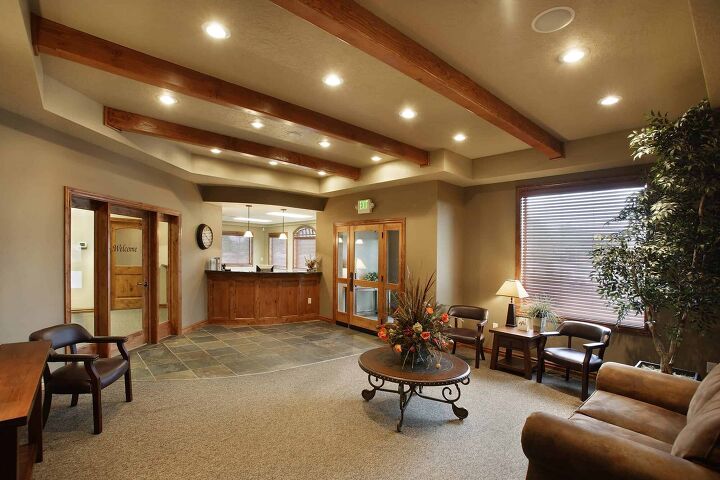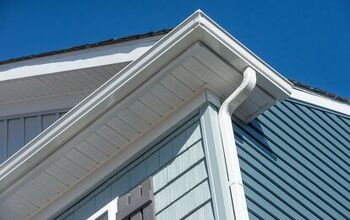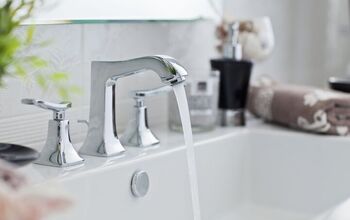4 Inch Vs. 6 Inch Recessed Lighting: Which Is Better?

By now, you’ve probably noticed that we’re big fans of recessed lighting. Recessed lighting never goes out of style, even if it can’t be used in vaulted ceilings. It’s reliable. It’s versatile. And while it may be a splurge compared to other forms of lighting, most people agree that it’s an investment worth every penny. The problem is trying to figure out what size lights you need, isn’t it?
Other than the physical size difference, 4-inch lights are more modern and used for task or accent lighting. Comparatively, 6-inch lights are ideal for general lighting and work best in mid-size or large rooms, where 4-inch lights won’t provide enough lighting. This is because 6-inch lights have a higher lumen output and a wide beam angle. To determine which light is best, measure your ceiling height and type and your room size.
Putting together your shopping list for a recessed lighting installation can be a little intimidating, but it doesn’t need to be that way. This guide includes all that you need to know about your lighting options and how they can affect your remodeling project. That way, you can choose which type of recessed lighting will be just right for your lovely home.
Do You Need to Hire an Electrician?
Get free, zero-commitment quotes from pro contractors near you.

Size Difference of Both Recessed Lights
When you hear someone say “4-inch light,” they are referring to the size of the recessed lighting can. So, a 4-inch light will have a diameter of 4 inches from one side of the can to the other. Since trims can vary, they aren’t taken into account when contractors talk about the size of lighting.
What Are The Differences Between 4 Inch Lights And 6 Inch Lights?
Both 4 and 6 inch recessed lights have their own benefits worth noting, especially when it comes to interior design. Take a look at their perks and pitfalls below:
- 4 inch lights are going to be cheaper and more energy-efficient. Size matters when it comes to cost. Since these take less material to make, they are going to be more affordable. Moreover, smaller lights tend to require less energy to operate, which makes them more energy-efficient.
- 4-inch lights are more modern. It’s true that 4-inch lights are more modern-looking, due to their smaller size. They also offer more options for specialty trims or gimbal. Their use varies but is most appropriate for task and accent lighting situations.
- 6 inch lights are considered to be the standard. Most regular-sized rooms look better with 6-inch lights, and most contractors prefer them. They look more proportional in larger rooms. Moreover, builders won’t need as many of them to get the same spread of light.
- 4 inch lights help smaller rooms look big. When most people think of recessed lighting, they tend to assume that they will be 6-inch lights. The thing is, if you’re installing 6-inch lights in a tiny room, it stops looking proportional and starts making the walls look cramped. 4-inch lights prevent this while still giving you a spaced-out look.
- 6-inch lights are better for general lighting. If you’re looking for a light size that will be able to illuminate everything well, 6-inchers are going to be it. They have a higher lumen output and a wide beam angle. 4-inch lights are usually better suited to highlighting surfaces or lighting up smaller closets.
Which Recessed Lighting Can Size Should I Use?
Determine which lighting layers your room really needs; Task, General, Accent lighting, or a mixture of these. You’ll have to plan for each layer separately.
In most cases, the best way to figure out what lighting size you should use is to take a look at the overall measurements of your room. The rule of thumb is that you should try to match the size of the recessed lighting to your room’s size. That being said, it is okay to use a variety of lighting sizes to get the full illumination that places need.
However, there are some rules of thumb that you can use to figure out which lighting type is better:
- If you are dealing with a small room, stick to the smaller size. Rooms like walk-in closets, laundry rooms, or children’s nooks all tend to work better with 4-inch recessed lights.
- Larger rooms, like living rooms, tend to work better with 6-inch lights. The general gist is that larger rooms will need to have more lighting, just to have the same amount of visibility. Having a larger can size will help.
- People who are looking to light up specific surfaces should opt for 4-inch lights. The smaller size can add drama while drawing a person’s sight to a focal point. This is especially true if the other lighting nearby is dimmer than usual.
- If you are working with vaulted ceilings, you shouldn’t work with recessed lighting at all. Recessed lighting and vaulted ceilings go together about as well as milk and orange juice. It will damage your ceilings regardless of can size, though some do believe that smaller cans might reduce damage.
Can You Use Both Lighting Sizes In The Same Room?
You can, and in fact, use both lighting sizes in the same room. It’s often the best way to make your room look great. Recessed light can be hard to work with on a uniform level. That’s why many interior designers might switch up the recessed lighting sizes to help add more balance to a room’s lighting. After all, there are no major rules that say you have to commit to one size or another, are there?
When you mix both lighting sizes in one room, it allows you to bounce the light in specific ways and make your room appear the way you want. For instance, if your room is small, you can make it to where your room looks larger by using both 4 and 6 inch recessed lights.
When Should You Ask An Interior Designer?
Trying to design your own lighting setup is not always easy, especially if you’re new to the concept of ambient lighting. It’s not always easy to determine what kind of lighting would work well for you, even if it’s something as simple as trying to figure out the right can size. If you’re not sure which to pick or just want to make sure you get the best possible match, ask a professional. They’ll be able to help you choose the right one.
Anytime you aren’t sure about your choices regarding the decoration or set up of your home, it’s always a good idea to call an interior designer. They are certified and trained to take a look at your home and make it into the most perfect space for your personality and desires.
How Much Does It Cost To Hire An Interior Designer?
On average, most people pay about $100 per hour. The amount you pay to hire an interior designer will depend on precisely who you hire or what company you go through. On the lower end, you can expect to pay about $60 to $75 per hour. However, you may end up paying as high as $115 to $125 an hour.
Now, if you’re hiring them for advice, they may charge you at a per-project fee rate. What this means is for your recessed lighting advice, they may charge you $30 for a half an hour to discuss any questions you have. Some also charge larger monthly fees if you have a larger project at hand. You may pay $500 for 30 days, but your interior designer will be on call for any questions you have. So, when hiring a designer, ask them their rates and how they charge.
Do You Need to Hire an Electrician?
Get free, zero-commitment quotes from pro contractors near you.

Our Final Take
When it comes to picking out recessed lighting, the can size will play a huge role when it comes to installation costs, ambiance, as well as the overall outcome of your remodeling project. That’s why it is crucial to know the perks and pitfalls of both 4- and 6-inch recessed lighting setups and why it’s a good idea to take your room’s overall look into account.
If you are trying to figure out which light size is right for you, the best way to pick your lights is to match the size of the light and the size of the room. This adds an element of proportionality to your overall design and ensures that the amount of light won’t overpower your room.
Even so, if you are not in the mood to stick with the rules of thumb, another way to get the kind of results you want is to ask a professional designer. More often than not, they will be happy to help you out.

Ossiana Tepfenhart is an expert writer, focusing on interior design and general home tips. Writing is her life, and it's what she does best. Her interests include art and real estate investments.
More by Ossiana Tepfenhart



















![How To Reset A Whirlpool Cabrio Washer [In 5 Easy Steps!]](https://cdn-fastly.upgradedhome.com/media/2023/07/31/9076531/how-to-reset-a-whirlpool-cabrio-washer-in-5-easy-steps.jpg?size=350x220)








